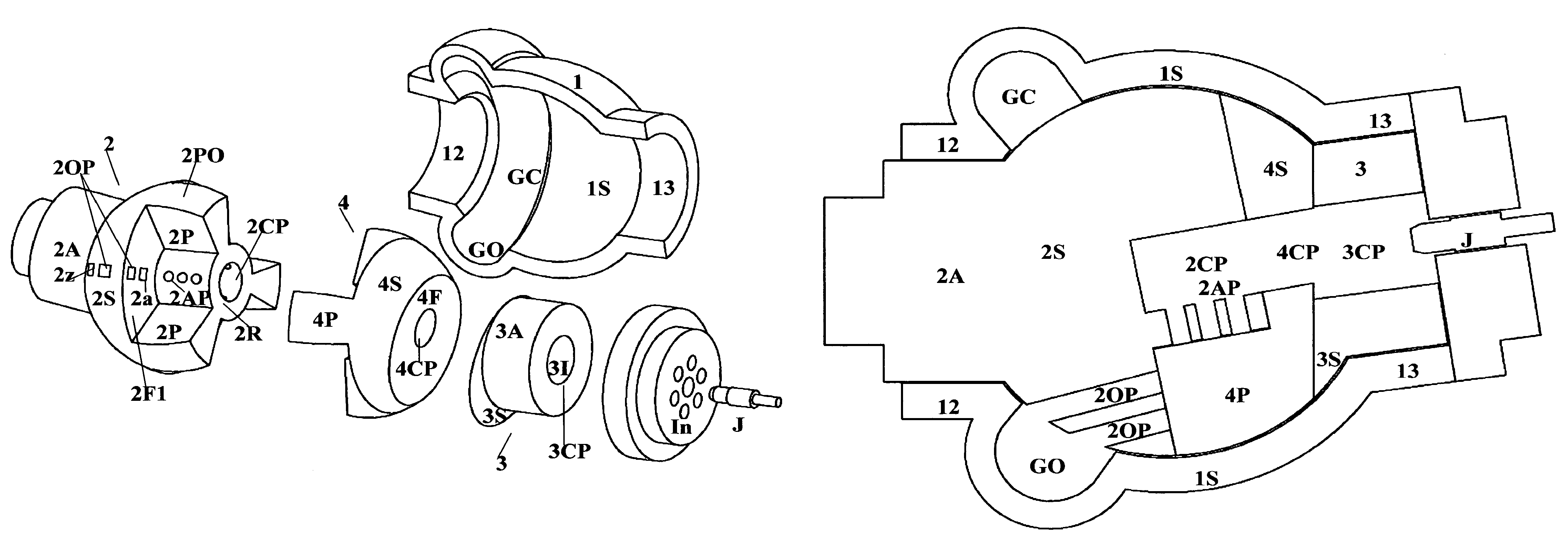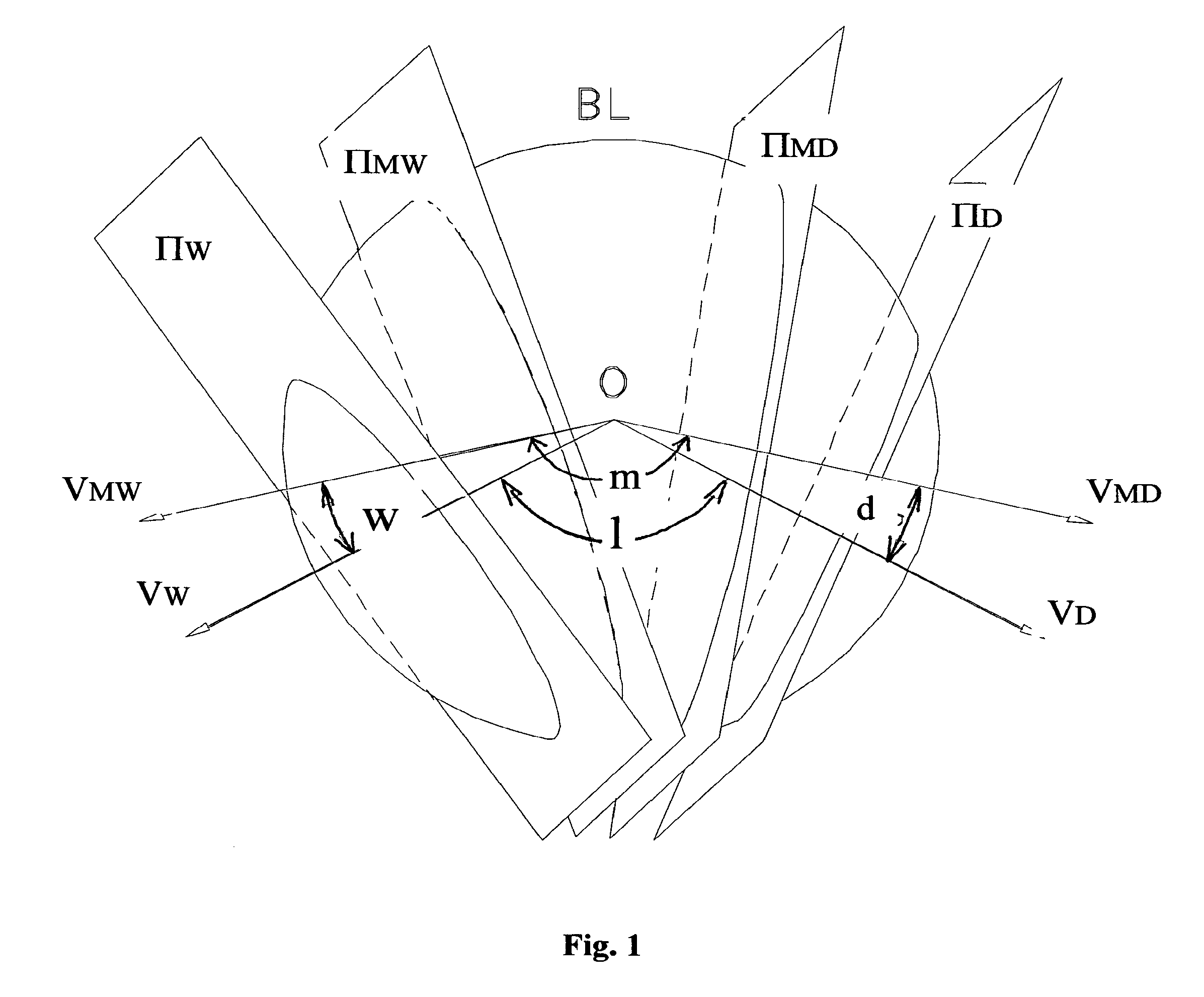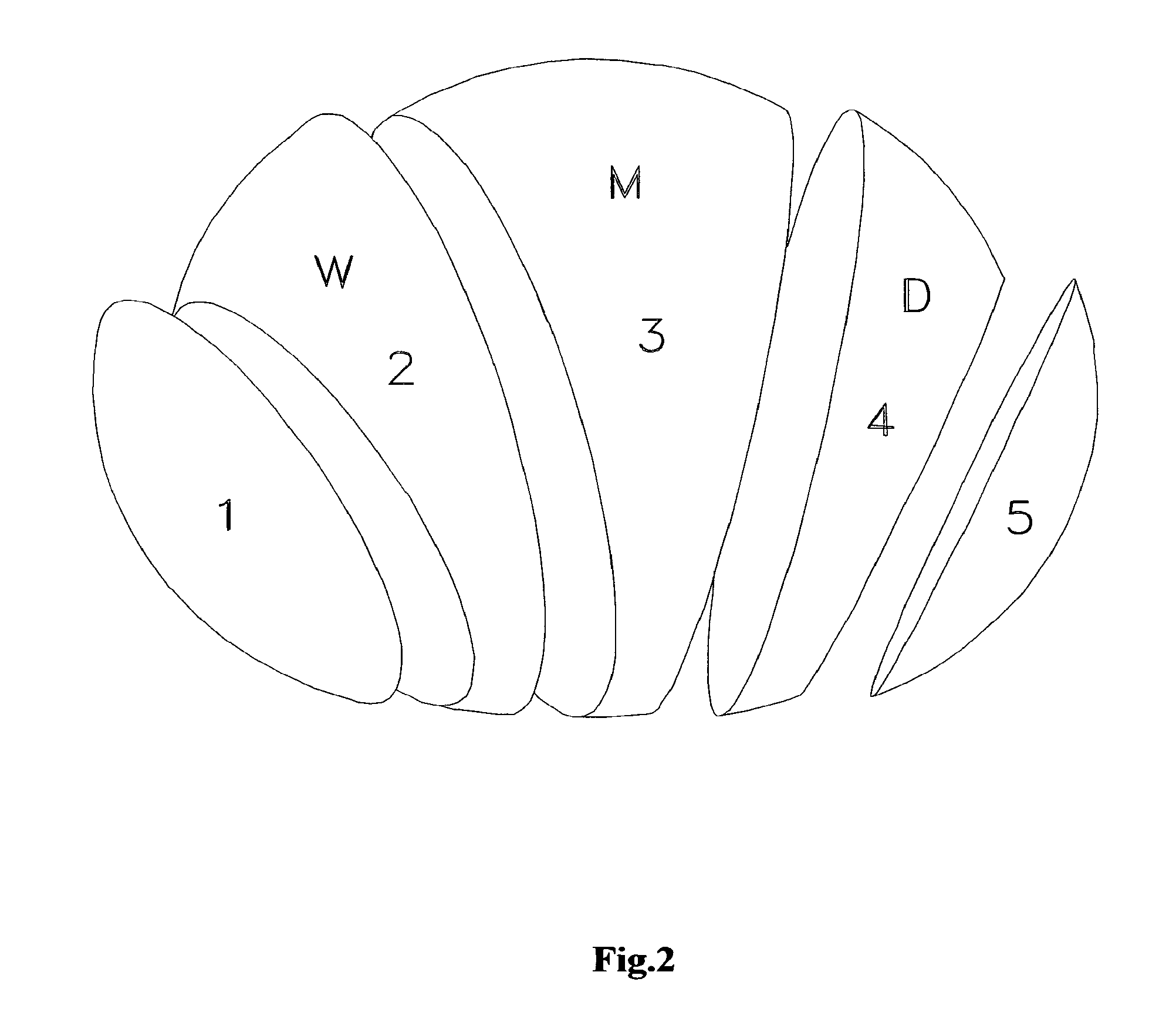Spherical two stroke engine system
a spherical and engine technology, applied in the direction of rotary or oscillating piston engines, rotary piston engines, engine lubrication, etc., can solve the problems of obstructed efficiency of real diesel engines, shortening the service life of primemovers, and complicated technology and more expensive. , to achieve the effect of high power density, high efficiency, and withstand extremely high loads
- Summary
- Abstract
- Description
- Claims
- Application Information
AI Technical Summary
Benefits of technology
Problems solved by technology
Method used
Image
Examples
Embodiment Construction
0. Main Geometric Construction
[0039]Now I present a short description of my method for achieving the strongest mechanism in existence capable of being applied in positive displacement engines. In fact the construction of these mechanisms lies at the very heart of the present invention.
[0040]The construction will be carried out in several simple steps (see FIGS. 1-5).
[0041]A. In the Euclidean 3-dimensional space choose a ball BL of radius R and center O and four vectors vw, vd, vmw and vmd of length R and based at the point O (FIG. 1). Any two of these vectors should not be parallel. Let w (resp. d; resp. m; resp. l) be the angle between the vectors vw, vmw (resp. vd, vmd; resp. vmw, vmd; resp. vw, vd);
B. Fix planes π(w), π(d), π(mw) and π(md) perpendicular to the vectors vw, vd, vmw and vmd respectively so as each of these planes non-trivially intersects the ball BL (FIG. 1).
C. Cut the ball BL along the planes π(w), (d), π(mw) and π(mw) into five components, say 1,2,3,4,5 (FIG. 2). ...
PUM
 Login to View More
Login to View More Abstract
Description
Claims
Application Information
 Login to View More
Login to View More - R&D
- Intellectual Property
- Life Sciences
- Materials
- Tech Scout
- Unparalleled Data Quality
- Higher Quality Content
- 60% Fewer Hallucinations
Browse by: Latest US Patents, China's latest patents, Technical Efficacy Thesaurus, Application Domain, Technology Topic, Popular Technical Reports.
© 2025 PatSnap. All rights reserved.Legal|Privacy policy|Modern Slavery Act Transparency Statement|Sitemap|About US| Contact US: help@patsnap.com



